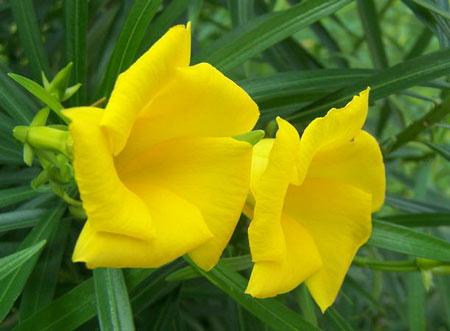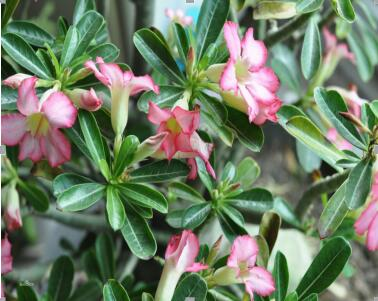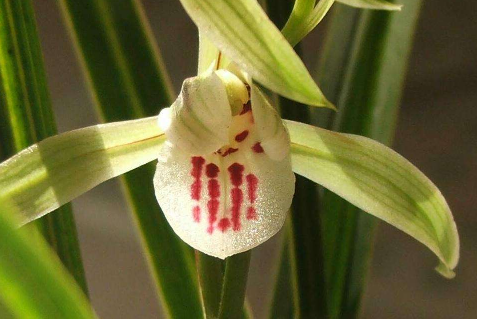Propagation mode of oleander
1. Sowing seeds
The way of sowing is simple and straightforward. the seeds are planted in the soil and raised in the greenhouse for a period of time, and finally taken out and planted.
2. Pressing strip
Cut and press the branches close to the surface into the soil, and then separate from the mother plant after it takes root.
3. Water plug
Cut the selected branches and put them into prepared glassware for holding water. Change the water frequently to prevent the roots from rotting.
4. Cuttage
Cut off the well-developed branches, dry them for a few days, wait for the wound to heal, then insert them into the soil, then water them to keep the soil moist, and then wait for them to take root.

All right, that's all for today. I hope the editor's content can help you and let you know more about oleander. Thank you for your reading!
The Propagation method of oleander the efficacy and function of oleander
Everyone should know that oleander is a very beautiful ornamental plant. Today we will tell you the breeding method of oleander and the efficacy and function of oleander.
Brief introduction of oleander:
Oleander, also known as willow peach, half a year red, is the oleander family, oleander genus evergreen shrub, up to 5 meters high, flowers like peach, leaves like bamboo, evergreen throughout the year. From spring to summer to autumn, flowers bloom and fall one after another. Leaves 3Mel 4 whorls, opposite in the lower part of the branch, the leaf is long lanceolate, the edge of the leaf is very smooth, the main vein of the leaf grows straight from the petiole to the tip of the leaf, and many tertiary veins are arising from the main vein, arranged neatly laterally. Oleander leaves also have a thin layer of "wax". This layer preserves the water and heat of the leaves, enabling plants to withstand the severe cold. Oleander flowers are fragrant, Cymes terminal, calyx erect, Corolla crimson like an open mulberry follicle, 10-23 cm long, with yellowish-brown seed hairs at the top of the seed.
The efficacy and function of oleander:
1. Oleander has excellent ornamental value. The leaves of this plant are like bamboo leaves, the flowers are pink or fiery red, they are even more beautiful than peach blossoms, and they have a unique aroma. The flowering period is from June to October every year. It is one of the most important ornamental flowers in gardens all over the country.
2. Oleander also has important applications in industry. Its seed is one of the most important industrial raw materials. There are a lot of oil in oleander seeds, and its content is about 58%. After extraction and processing, it can be made into a wide range of lubricating oil.
3. Oleander also plays an important role in the textile industry. its stem and bark fiber is one of the natural textile raw materials. after its application in the textile industry, it can weave some high-quality textiles.
4. Oleander has excellent medicinal efficacy. The contents of oleander glycosides, glycosides and other substances in this plant are very high. After being used in medicine, it can play the role of cardiotonic and diuresis, and has the effect of prevention and treatment for all kinds of heart disease and urination. In addition, oleander also plays a significant role in human trauma after being used as medicine, which can eliminate redness, swelling and pain in the injury caused by falling.
Propagation methods of oleander:
1. Cuttage propagation. The success rate of cutting propagation of oleander is relatively high. Reproduction can be carried out in spring and autumn. Water cutting propagation is easier to take root. Select the branches of the first year, take a small section 30 to 40 centimeters long, and generally insert it into the seedbed.
2. Striping propagation. Take the one-year strong-growing branches on the periphery of the mother branch, leave the leaves about 30 cm down from the top, and remove all the following leaves. Bend the branch into a circle in the appropriate place, the tip of the branch up, and secure the circle with a rope. After more than a month, it was basically generated.
3. Branching propagation. Oleander has many roots. It divides in early spring and can blossom that year.
Propagation methods of oleander
Growth habits of oleander
Oleander likes to grow in a warm and humid environment, which is less resistant to cold and water, so it should be planted in dry and well-drained places, like sunshine, fertilizers, and can adapt to a more shady environment. Its sprouting and tillering ability is relatively strong, and the tree is easy to recover after being injured.
Propagation methods of oleander sowing and propagation
Oleander fruits can be picked and sown at any time after ripening, and can not emerge until three months after sowing in the greenhouse.
Striping propagation
In the rainy season, cut the branches near the surface and press them into the soil, which can be separated from the mother after taking root about two months later.
Water plug
Water can be inserted during the growing season of oleander. Cut about 30 to 40 centimeters of branches, split their lower ends about four to six centimeters with a knife, then insert them into a water container and wait for them to take root.
Cuttage propagation
Choose healthy branches, cut them with scissors, cut the upper end into a horizontal plane, and cut the lower end into a bevel to remove the lower branches and leaves. The soil should be disinfected before cutting, and the treated cuttings should be cut according to the plant spacing of 5 × 5 cm, so that the interface of the cuttings is in close contact with the soil matrix, and be careful not to scratch the cortex of the incision under the cuttings. Generally, it can take root about 15-20 days after cutting. Attention should be paid to timely watering after cutting and shading should be carried out when the temperature is too high.
Oleander is known as the "green vacuum cleaner". It has a strong dust adsorption capacity and can purify the air, so flower friends can plant more oleander at home.
- Prev

I. Culture methods of desert roses
1. How to propagate the seedlings of desert roses. This plant can cultivate its seedlings not only by means of seeds, but also by cutting, both of which have their own advantages and disadvantages. Everyone can choose according to their own needs. 2. the growth habit of desert rose is just like its name.
- Next

Matters needing attention in the Culture of Cold Orchid
1. Cold orchid leaves slender, many stomata, thin leaves and air contact surface is large, fresh environment can promote plant growth well. The farmed cold orchid medicine is placed away from the oil fume and the air outlet of the air conditioner, and the leaves can be often washed with clean water. two。 Seedling division usually begins in August, which is helpful to inhibit the formation of germination.
Related
- Fuxing push coffee new agricultural production and marketing class: lack of small-scale processing plants
- Jujube rice field leisure farm deep ploughing Yilan for five years to create a space for organic food and play
- Nongyu Farm-A trial of organic papaya for brave women with advanced technology
- Four points for attention in the prevention and control of diseases and insect pests of edible fungi
- How to add nutrient solution to Edible Fungi
- Is there any good way to control edible fungus mites?
- Open Inoculation Technology of Edible Fungi
- Is there any clever way to use fertilizer for edible fungus in winter?
- What agents are used to kill the pathogens of edible fungi in the mushroom shed?
- Rapid drying of Edible Fungi

